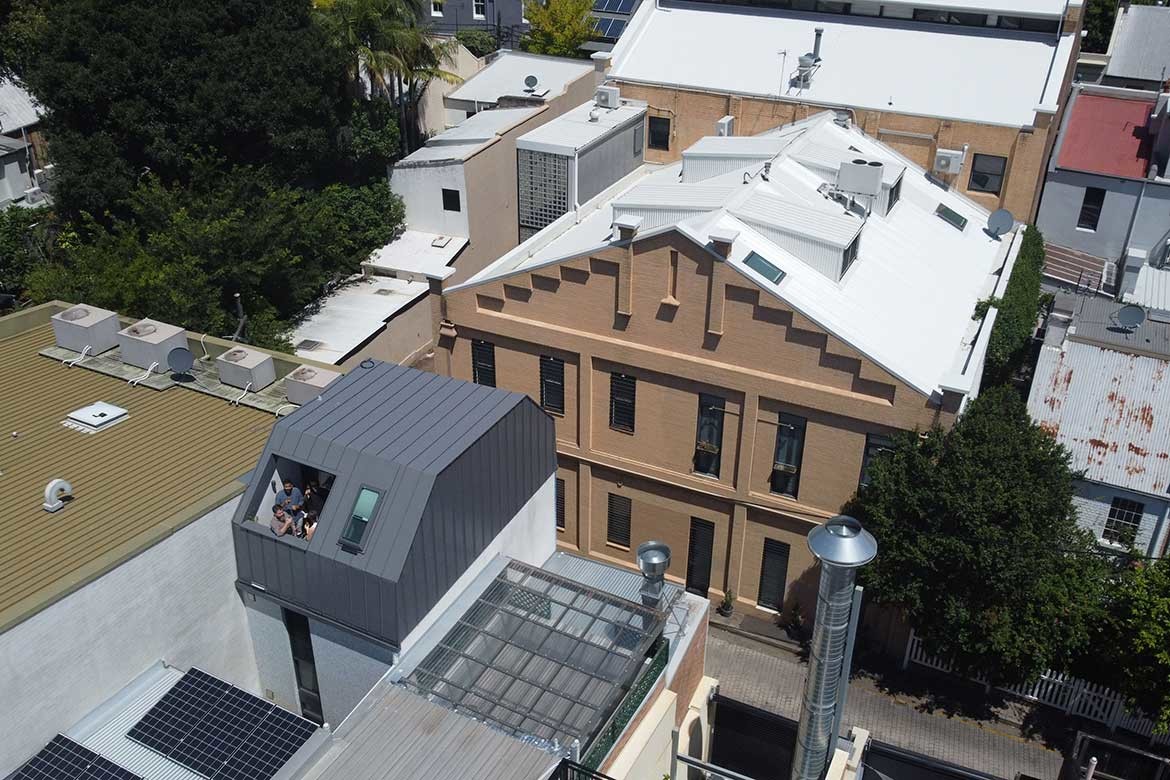When RAAarchitects purchased this dilapidated two-storey commercial property in 2017, it was in desperate need of attention. It was in a state of disrepair, surrounded by vacant shops and a grungy laneway at the rear. But it also had a large basement and car space, a 3:1 floor-to-space ratio (FSR), a 12-metre height limit and mixed-use zoning.
“To us, it oozed opportunity,” explains Lexie Adams, architect of the Sydney studio. “Our intentions were to catalyse the (re)activation of the building across its two street frontages; establishing a precedent for the area and other underutilised inner-city commercial terraces.”
The architects’ program involved making use of every inch of available space – a mere 6.1 by 3.6-metre footprint – to accommodate an office for the practice and to create a compact, sustainable dwelling.
Remarkably, the team have managed to squeeze two commercial spaces and a freestanding house onto the 88.2-square-metre site, with a 2.2-metre wide void separating them, channelling light and ventilation to both.
There were myriad challenges, including integrating the necessary services into the site. “The set out of services was carefully considered as all services had to be hidden within the 140-millimetre and 190-millimetre exposed concrete block walls,” shares Adams.
“Within this small vertical house, the amount of areas required (kitchen, laundry, bathroom) is virtually the same as what’s required in regular sized houses, so each square metre costs more to build. Therefore, this involved a very careful coordination of the builder, plumber, electrician, and architect.”
In response, these service areas were combined to minimise circulation, thereby maximising space for the living areas.

The house works like a vertical apartment, with each room located on a separate storey. Given the tiny footprint and verticality of the house (11 metres), an efficient and compact stair is the central design element. The new stair offers comfortable circulation in a minimum volume and creates a focal point on each floor.
“The mild steel treads, risers, vertical balustrade rods and handrails were laser-cut off-site and welded in situ over several months before its natural rusted finish was sealed in,” says Adams. “The folded metal staircase is as much a sculptural object as a circulation space (with perfect light for plants).”
As one ascends, each level has a different feel, with an inward-looking bedroom on one level, a sunny kitchen and dining with view glimpses on the next, and a living room and balcony with city views over the adjacent rooftops on the top floor.
Related: This warehouse is now a fine contemporary home, where the past meets modern creature comforts.
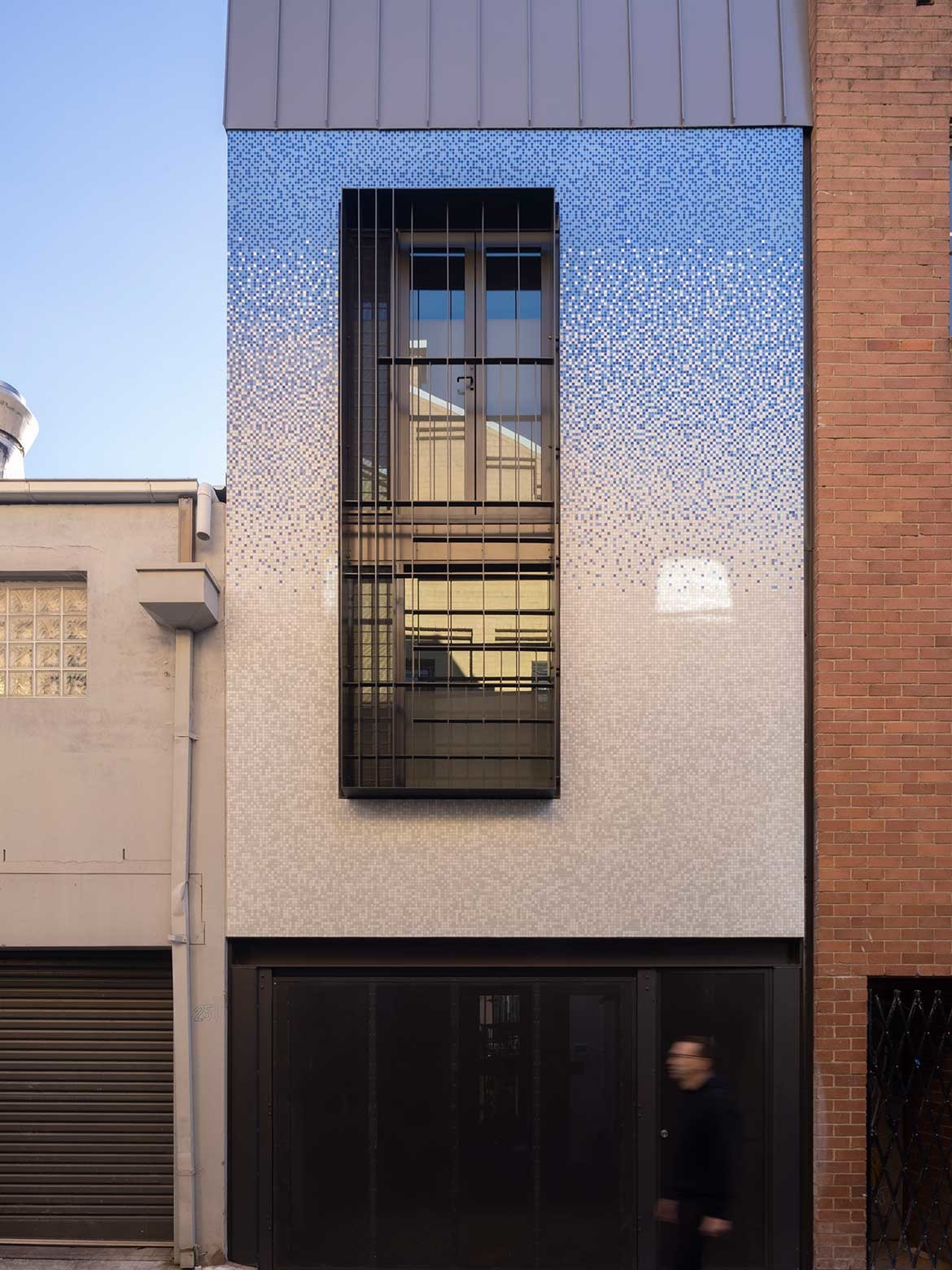
Internally, the joinery located on the first-floor eastern wall continues from the bar through to the bedroom area. In the circulation space, the joinery is black to match the steel stairs, and in the non-circulation space, the joinery is white, creating a delineation between the two spaces. Externally, the house façade features mosaic tiles.
“In addition to reflecting light through the lightwell, the gold tiles, visible through the open-plan commercial ground floor, highlight to viewers on Oxford Street that a distinct building sits at the back of the site,” elaborates Adams.
“The blue mosaic [tile] facing Sturt Street echoes the building’s past: the basement excavation revealed two large blue-tiled spa baths that were part of an iconic gay sauna, ‘253 Baths’, which operated on the premises in the late 1970s and early 1980s.”
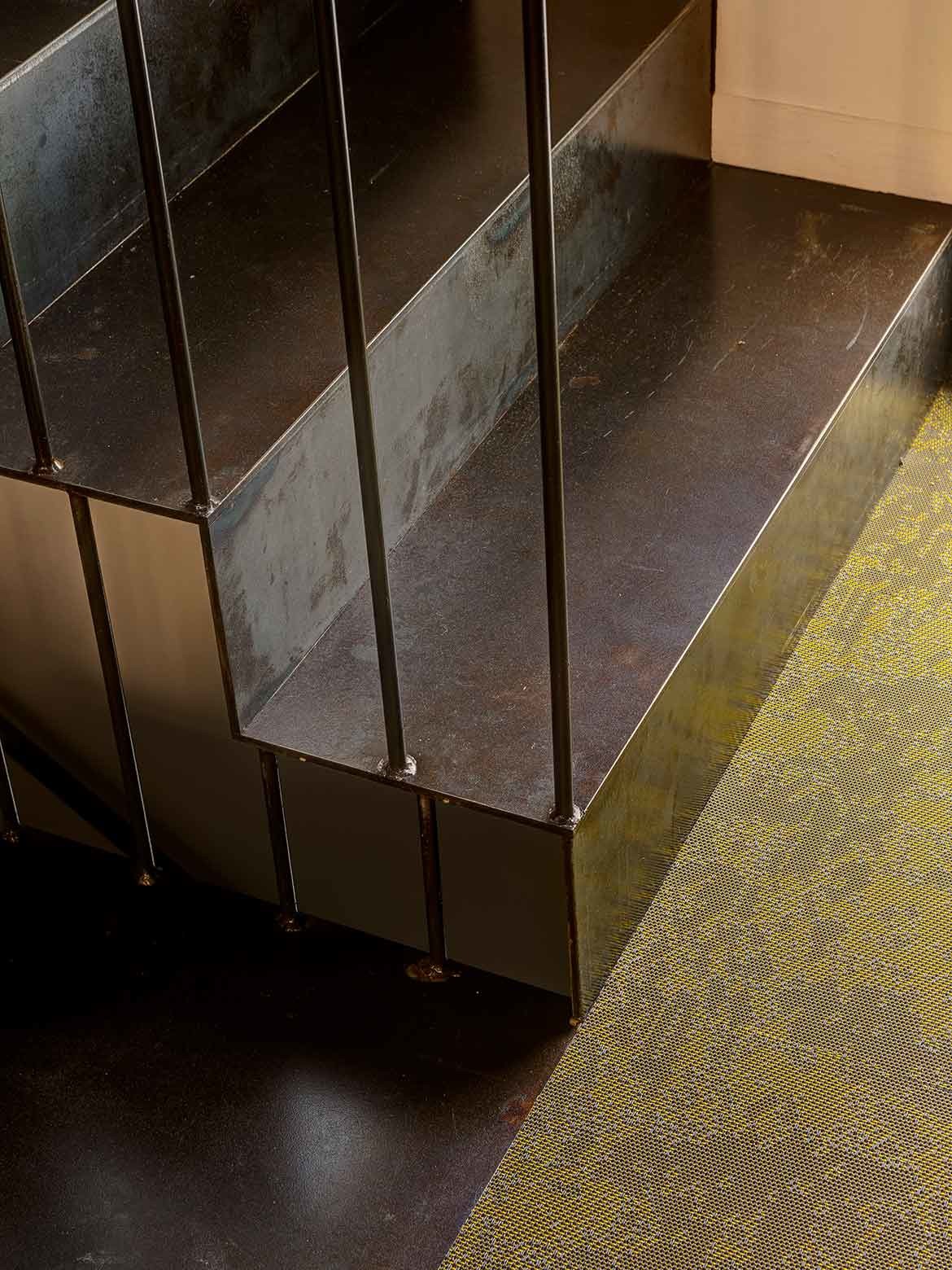
From an urban perspective, the house aims to connect Oxford Street and Sturt Street visually. “The split levels of the parking space and shared entry to the house, courtyard and basement office, accessed from Sturt Street provide views through the entire building,” says Adams.
“Along with the additional residential and commercial activity, additional openings, and obvious improvement visible from Sturt Street, this initiative supported both the studio and council’s objective to increase passive surveillance and encourage pedestrian activity in the area.”
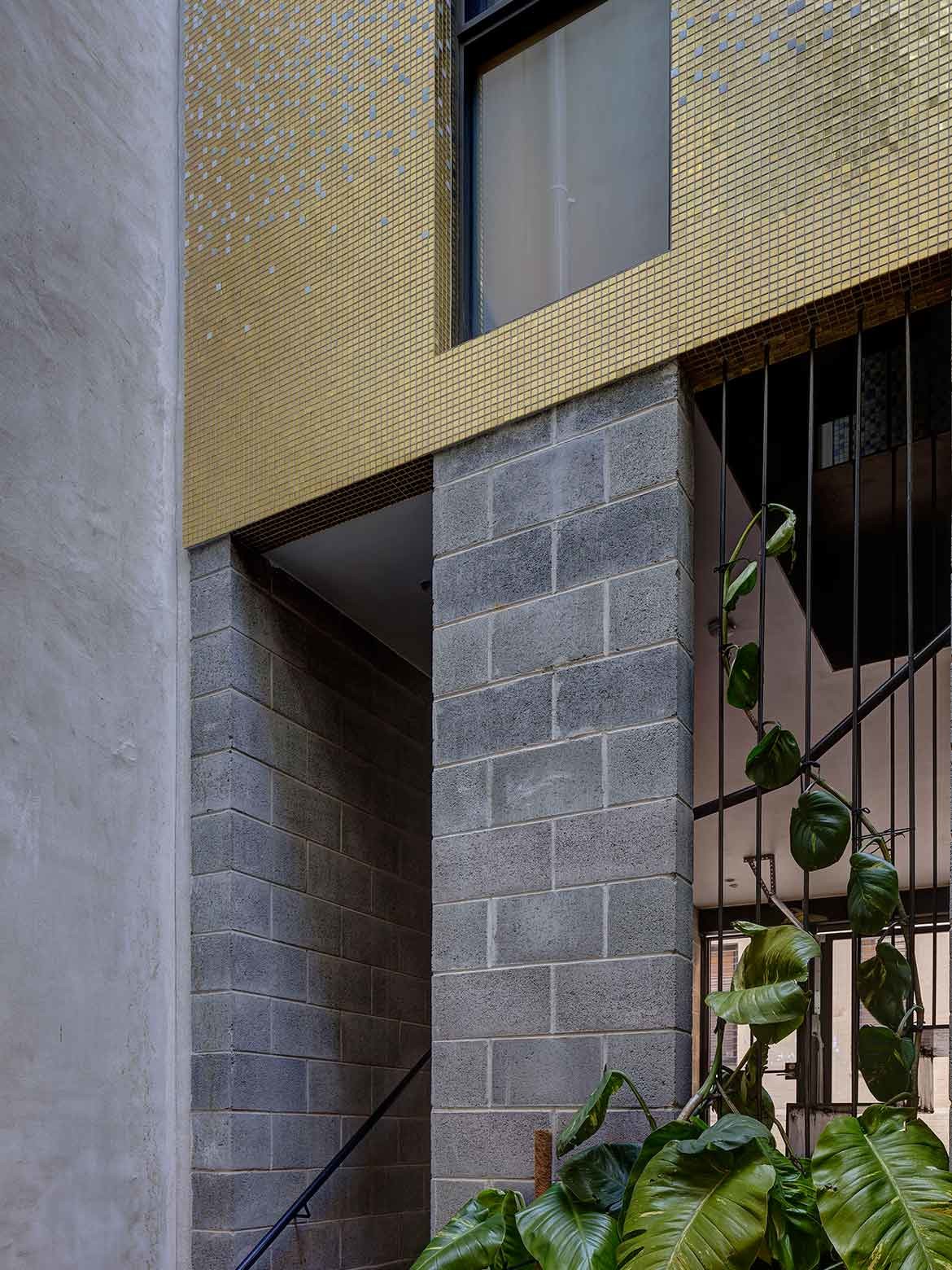

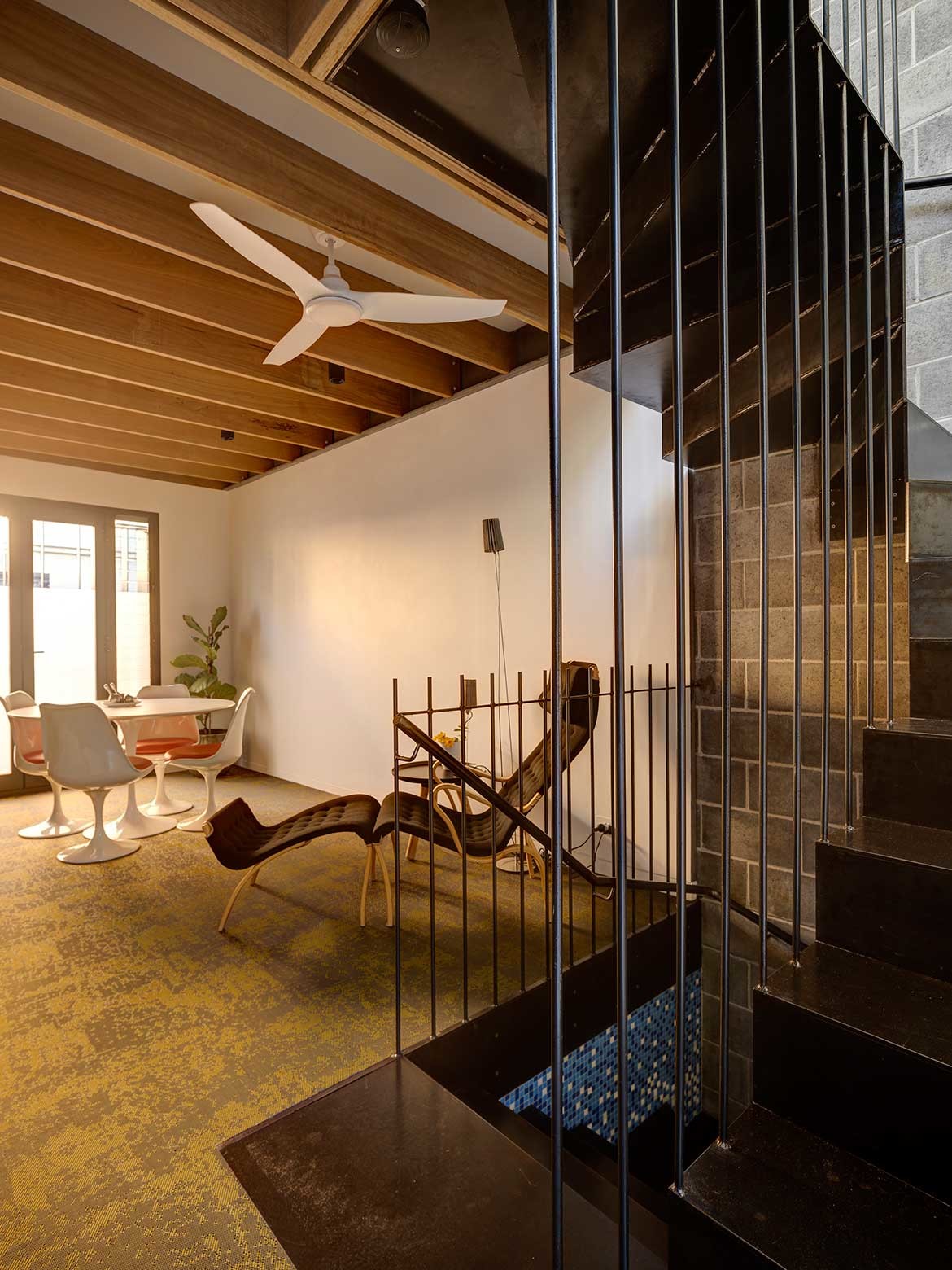

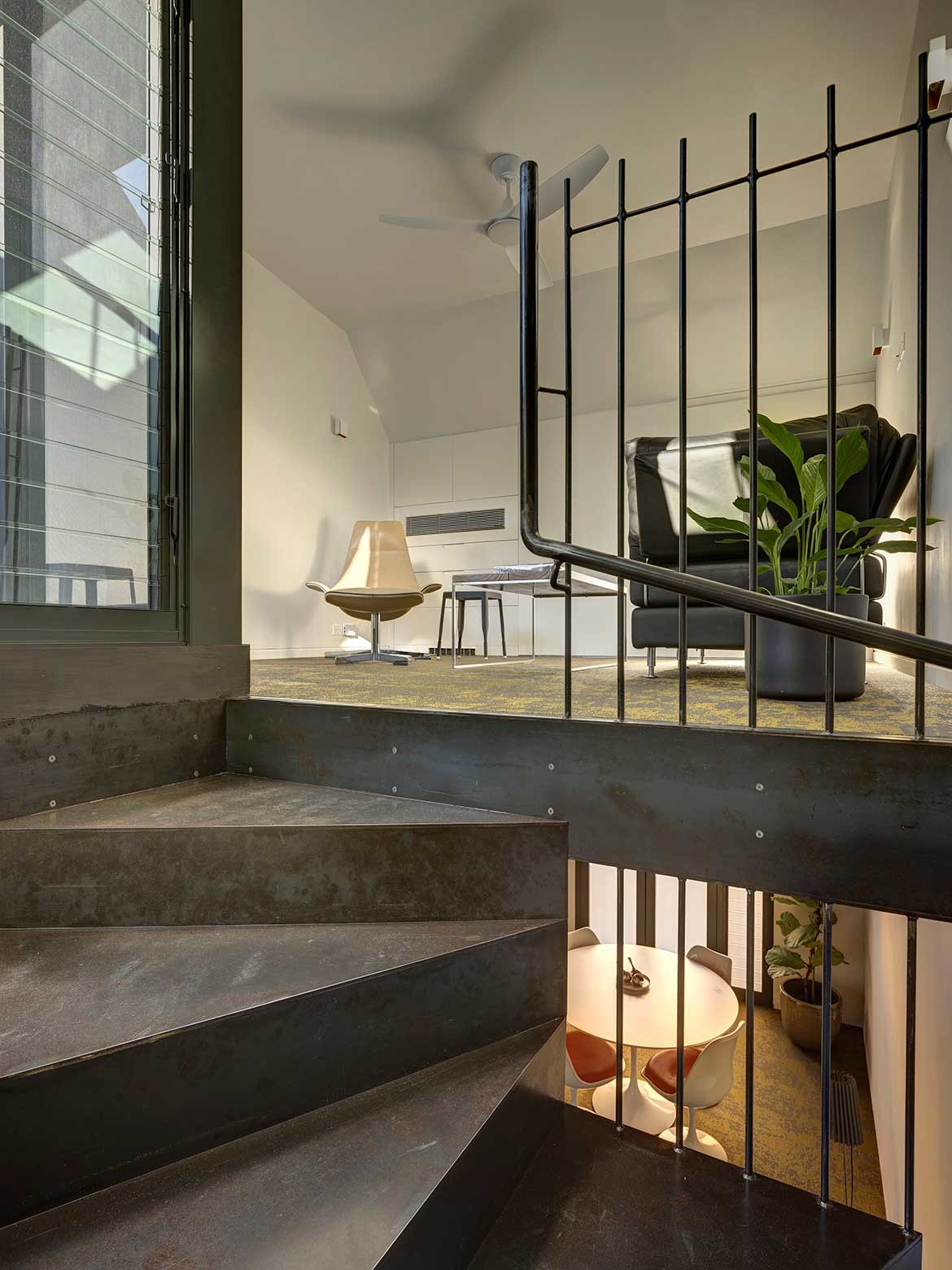

Project Details
Architecture – RAA architects
Photography – Brett Boardman
We think you might like this story on a reimagined a jaded family home that has mid-century accents and stellar planning.

